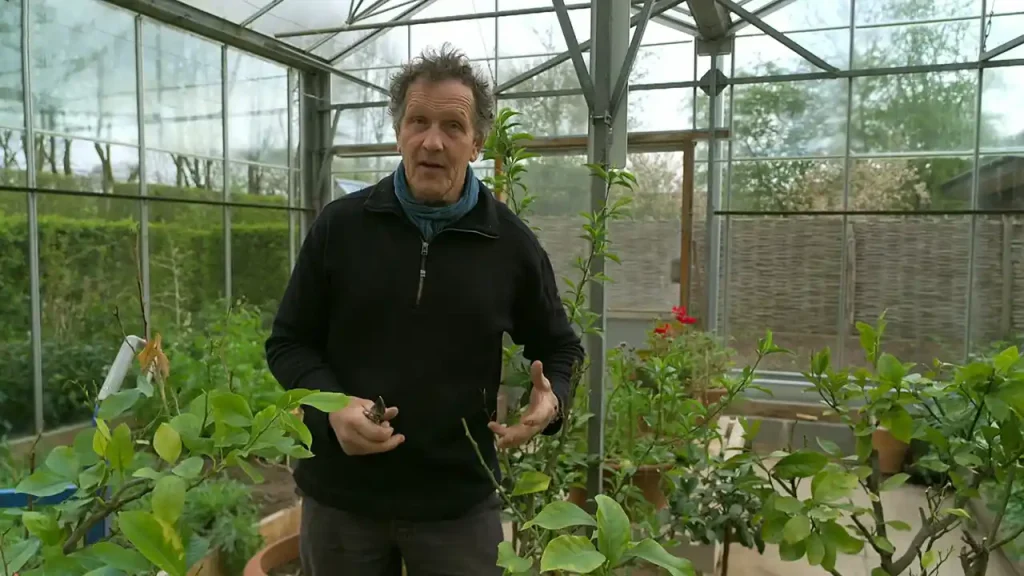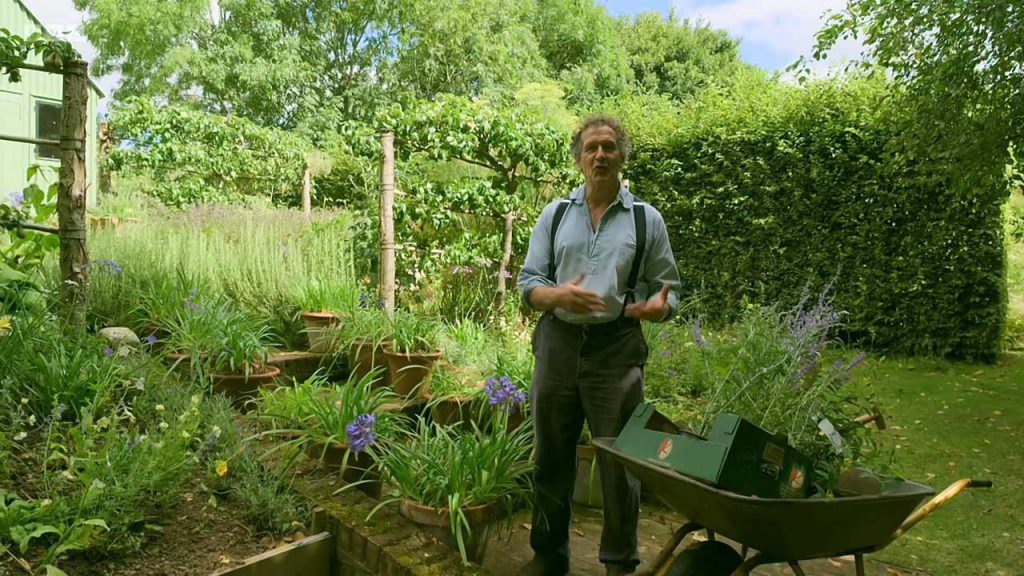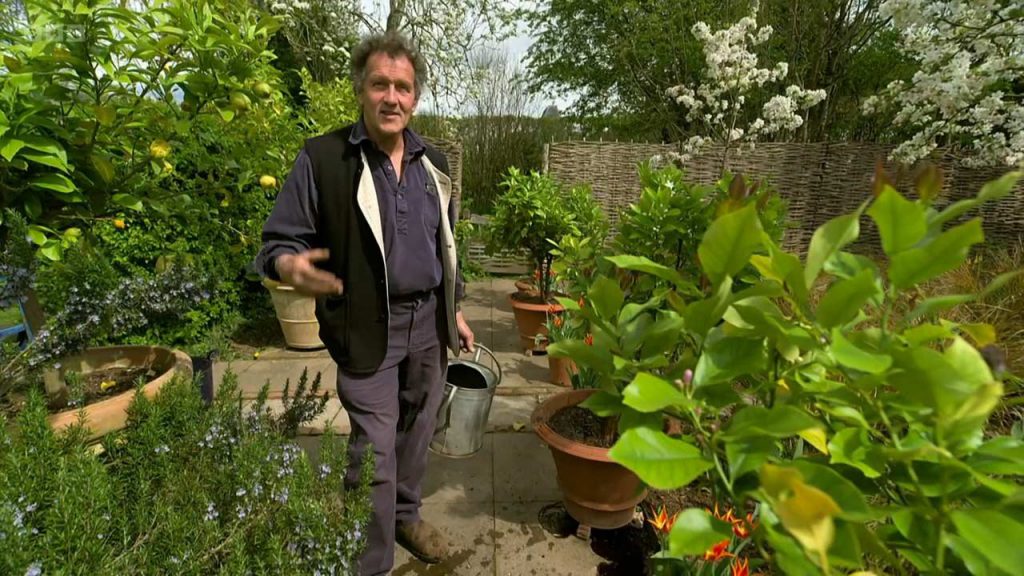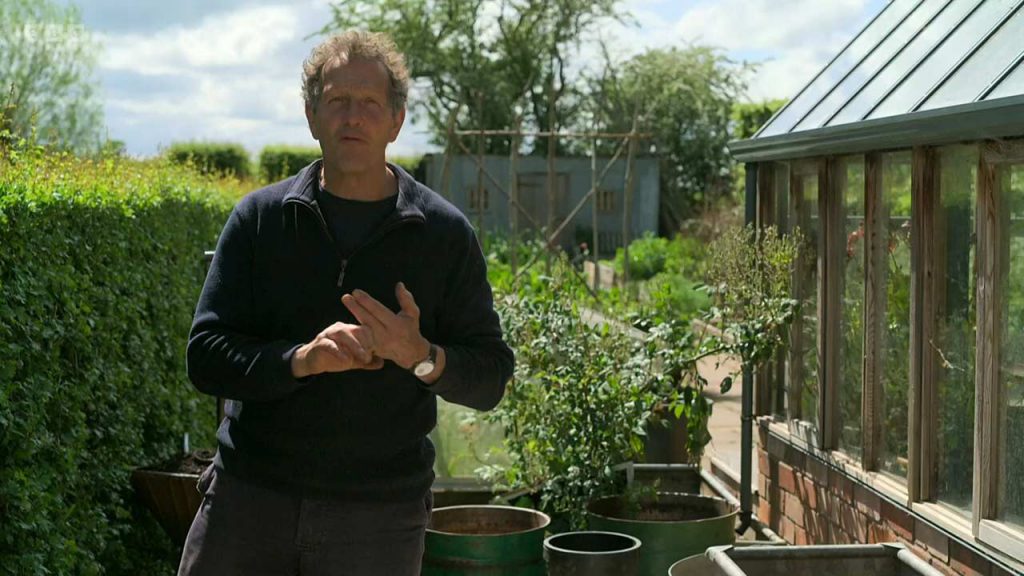Gardeners World 2023 episode 7: Monty is currently hard at work, meticulously planting an array of umbellifers while making several transformative adjustments to the dry garden. Not only that, but he is also taking the time to sow peas and carefully pot his stunning dahlias. In the meantime, Carol is eager to share the thrilling plans she has been developing for an impressive show garden, which she is designing specifically for the prestigious RHS Hampton Court Palace Garden Festival. As she unveils her vision, there is also important news to discuss: the upcoming ban on peat in compost. Arit takes a deep dive into this crucial development, exploring the potential ramifications for both the horticultural industry and gardeners throughout the United Kingdom.
But that’s not all! In the picturesque coastal town of Lytham St Annes, we discover a generous gardener who cultivates an abundance of vegetables on his well-tended allotment. He grows such a plentiful supply that he happily shares his surplus with friends and neighbours, spreading the joy of fresh produce throughout the community. Additionally, we will be delving into the enchanting garden of a professor who takes a uniquely scientific approach to gardening with a focus on promoting wildlife.
Gardeners’ World is a long-running British gardening programme that started on 5 January 1968. It was described as “a weekly series for gardeners, advanced and beginners, throughout the British Isles”. It picked up where its forerunner – Gardening Club – left off, and also featured that programme’s much loved presenter, the knowledgeable and down-to-earth Percy Thrower. The programme covers various aspects of gardening, such as plants, wildlife, design, techniques, tips and advice. It also features visits to gardens around the country and interviews with experts and enthusiasts.
Gardeners World 2023 episode 7
Orpine (Hylotelephium telephium) – A Comprehensive Guide to the Resilient Perennial Plant
Orpine, scientifically known as Hylotelephium telephium, is a fascinating and versatile perennial plant that thrives in various habitats. In this article, we delve into the intriguing characteristics of Orpine, including its identification features, habitat, cultivation, and uses in both traditional medicine and modern applications.
Identifying Orpine
Orpine, belonging to the family Crassulaceae, is a robust perennial plant known for its fleshy, succulent leaves and attractive clusters of star-shaped flowers. It is also commonly referred to as “live forever” or “witch’s moneybags” due to its longevity and ability to withstand harsh conditions. The key features that aid in identifying Orpine are as follows:
- Stems: Erect, branching, and often tinged with red or purple hues, reaching up to 50-100 cm in height.
- Leaves: Fleshy, oval to oblong, and succulent in nature, with a length of 3-8 cm and a width of 1-3 cm. The leaves are arranged alternately along the stem and are often reddish-purple at the edges.
- Flowers: Star-shaped, small, and typically pink or purple, with a diameter of 6-10 mm. The flowers form dense, flat-topped clusters at the tips of the stems, blooming from late summer to early autumn.
- Fruits: Small, reddish-brown, and elliptical, containing numerous minute seeds.
Habitat and Distribution
Orpine is a highly adaptable plant that can thrive in a variety of habitats. It is commonly found in the following environments:
- Woodland clearings and edges
- Rocky outcrops
- Grasslands
- Hedgerows
- Roadside verges
The plant has a wide distribution, native to much of Europe, Asia, and North America. In the United Kingdom, it is more commonly found in England and Wales, with a sparser presence in Scotland and Ireland.
Cultivation and Care – Gardeners World 2023 episode 7
Orpine is a low-maintenance plant, perfect for garden enthusiasts and beginners alike. Its ability to withstand drought and poor soil conditions makes it an excellent choice for rock gardens, borders, and naturalised areas. Here are some tips for cultivating and caring for Orpine:
- Soil: Orpine prefers well-draining soil with a neutral to slightly alkaline pH. It can tolerate a wide range of soil types, including clay, loam, and sandy soils.
- Light: The plant thrives in full sun to partial shade. However, for optimal flowering, it is best to provide at least 6 hours of direct sunlight daily.
- Water: Orpine is drought-tolerant and requires minimal watering once established. Overwatering may lead to root rot, so it is crucial to allow the soil to dry out between waterings.
- Fertiliser: A light application of a balanced, slow-release fertiliser in spring is sufficient for the plant’s nutritional needs.
- Propagation: Orpine can be propagated through seed sowing, division, or stem cuttings. For best results, propagate in spring or autumn.
- Pests and Diseases: Orpine is relatively pest and disease-resistant
Modern Applications
Apart from its medicinal uses, Orpine has found a place in modern applications as well:
- Gardening and landscaping: Due to its low-maintenance nature, Orpine has become a popular choice for rock gardens, borders, and xeriscaping. The plant’s attractive foliage and flowers make it a visually appealing addition to any garden.
- Wildlife attraction: The flowers of Orpine attract pollinators, such as bees and butterflies, making it an excellent plant for supporting local ecosystems and biodiversity.
- Culinary uses: The leaves of Orpine can be consumed raw or cooked, and are sometimes added to salads or used as a garnish. However, consumption should be done in moderation, as excessive amounts may cause gastrointestinal discomfort.
In conclusion, Orpine (Hylotelephium telephium) is a versatile and resilient perennial plant with a rich history of traditional medicinal uses and modern applications. Its low-maintenance nature, adaptability, and ornamental appeal make it an attractive addition to gardens and landscapes. By cultivating and caring for Orpine, garden enthusiasts can enjoy the myriad benefits this fascinating plant has to offer.
The Ultimate Guide to Growing Clematis: Cultivating Beautiful, Healthy Climbers for Your Garden
Introduction
In Gardeners World 2023 episode 7, they are passionate about providing the most comprehensive and up-to-date information on growing a stunning and healthy clematis in your garden. Our guide covers everything you need to know, from choosing the right variety to pruning and maintenance, ensuring your clematis thrives and provides you with eye-catching blooms for years to come.
Choosing the Perfect Clematis Variety – Gardeners World 2023 episode 7
Early-Flowering Clematis
These clematis varieties typically flower between April and June. Some popular early-flowering varieties include:
- Clematis alpina
- Clematis macropetala
- Clematis montana
Mid-Season Clematis
Mid-season clematis flower from July to August. Popular varieties include:
- Clematis ‘Nelly Moser’
- Clematis ‘Niobe’
- Clematis ‘Perle d’Azur’
Late-Flowering Clematis
Flowering from September to October, these varieties provide late-season interest. Some popular options are:
- Clematis ‘Bill MacKenzie’
- Clematis ‘Etoile Violette’
- Clematis ‘Sweet Autumn’
Planting Your Clematis
Location and Soil Preparation
Clematis thrive in well-draining soil with a neutral pH, rich in organic matter. Choose a location with at least 6 hours of sunlight per day, with some protection from intense midday sun.
To prepare the soil:
- Dig a hole twice as wide and deep as the root ball.
- Amend the soil with well-rotted compost or manure.
- Plant the clematis with the crown 5cm below the soil surface to encourage strong root growth.
Supporting Your Clematis
Clematis are natural climbers, so provide a trellis, pergola, or other support structure. Attach the plant to the support using soft ties, allowing room for growth.
Watering and Feeding Your Clematis
Watering
Clematis require consistent moisture, especially during the first year. Water thoroughly once a week or more frequently in hot, dry conditions.
Feeding
Apply a balanced, slow-release fertiliser in early spring and again in mid-summer. For an organic option, apply well-rotted compost or manure around the base of the plant.
Pruning and Maintenance
Pruning Groups
Clematis are divided into three pruning groups based on their flowering times:
- Group 1: Early-flowering varieties
- Group 2: Mid-season varieties
- Group 3: Late-flowering varieties
Pruning Techniques
- Group 1: Prune lightly after flowering, removing dead or weak stems.
- Group 2: Prune in late winter or early spring, removing dead or damaged stems. After the first flush of flowers, cut back some stems by half to encourage a second bloom.
- Group 3: Prune hard in late winter or early spring, cutting stems back to 30-45cm above the ground.
Troubleshooting Common Clematis Problems
Clematis Wilt
Symptoms include wilting and blackening of leaves and stems. Prune affected stems and improve air circulation to prevent the fungal disease.
Slugs and Snails
These pests can damage young clematis shoots. Use organic slug and snail control methods such as copper tape, beer traps, or nematodes.

Unveiling the Majesty of the RHS Hampton Court Palace Garden Festival
Embark on a journey to explore the enchanting world of the prestigious RHS Hampton Court Palace Garden Festival. Held annually at the historic Hampton Court Palace in East Molesey, Surrey, this captivating event showcases the crème de la crème of garden design, horticulture, and outdoor living. Get ready to immerse yourself in a vibrant and unforgettable experience that blends history, art, and nature.
A Brief Overview of the RHS Hampton Court Palace Garden Festival
History and Evolution of the Festival
The RHS Hampton Court Palace Garden Festival, established in 1990, is the largest garden event of its kind in the United Kingdom. Organised by the Royal Horticultural Society (RHS), the festival has evolved over the years, attracting horticulture enthusiasts and leading designers from all over the world. Its prominence has grown exponentially, garnering international attention and acclaim.
Festival Highlights and Attractions
During the festival, visitors have the opportunity to witness a plethora of show gardens, conceptual gardens, and floral displays. Each year, the festival offers a unique theme that encourages innovation and creativity among garden designers and exhibitors. The RHS Hampton Court Palace Garden Festival has truly become a celebration of gardening excellence and a platform for emerging talents in the field.
Show Gardens: Creativity and Inspiration Unleashed
The show gardens are the pièce de résistance of the RHS Hampton Court Palace Garden Festival. Esteemed designers showcase their talent by creating gardens that embody cutting-edge design, eco-friendly practices, and innovative planting schemes. These gardens often feature distinct themes, ranging from urban greening and wildlife conservation to mental wellbeing and sustainable living.
Notable Show Gardens From Previous Editions
Some of the most memorable show gardens from past festivals include:
- The Thames Water Flourishing Future Garden (2019): Designed by Tony Woods, this garden showcased how urban spaces can be transformed into sustainable, water-sensitive environments.
- The Cancer Research UK Pledge Pathway to Progress (2021): Conceived by Tom Simpson, this garden symbolised the journey of cancer research, featuring plants chosen for their scientific and medicinal significance.
Floral Marquee: A Wonderland of Blooms
The Floral Marquee, an iconic feature of the festival, houses an impressive collection of nurseries and specialist growers. This treasure trove of flowers offers a unique opportunity for gardening enthusiasts to purchase rare and unusual plants, while also gathering valuable cultivation tips from the experts.
Workshops, Talks, and Demonstrations: Learning From the Masters

The RHS Hampton Court Palace Garden Festival serves as an educational platform for garden enthusiasts of all skill levels. Throughout the event, visitors can attend workshops, talks, and demonstrations led by renowned experts in horticulture, garden design, and environmental conservation. These interactive sessions allow attendees to deepen their knowledge and sharpen their gardening skills.
Shopping and Culinary Delights: Indulging the Senses
The festival offers an extensive array of shopping options, with a focus on high-quality, artisanal products. From garden tools and ornaments to outdoor furniture and bespoke sculptures, there is something to suit every taste and budget. The event also boasts a delectable selection of culinary delights, featuring local produce and international cuisines that cater to all palates.
A Must-Visit Event for Garden Lovers
The RHS Hampton Court Palace Garden Festival is a testament to the transformative power of gardens and the passion of the horticultural community. This annual extravaganza is a must-visit event for garden lovers, offering an unparalleled opportunity to explore the latest trends in garden design, connect with like-minded enthusiasts, and celebrate the beauty of nature. From the captivating show gardens to the stunning floral displays and enlightening workshops, the RHS Hampton Court Palace Garden Festival promises an unforgettable experience for all who attend. So, mark your calendars and prepare to embark on a horticultural adventure that will leave you inspired, invigorated, and eager to cultivate your own garden paradise.
In Gardeners World 2023 episode 7 you will find answers to this questions:
- How to plant umbellifers?
- What is the dry garden technique?
- How to sow peas?
- How to pot dahlias?
- What are the implications of the peat ban?
- How to identify Orpine?
- Where can I watch Gardeners World 2023?




